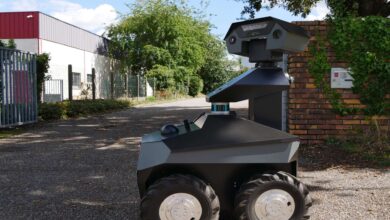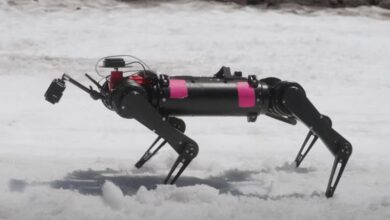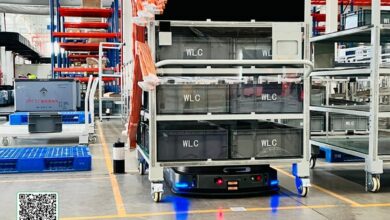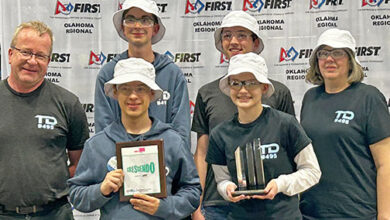Ukrainian Forces Expand Robotic Warfare Capabilities with Ratel S UGV Deployment
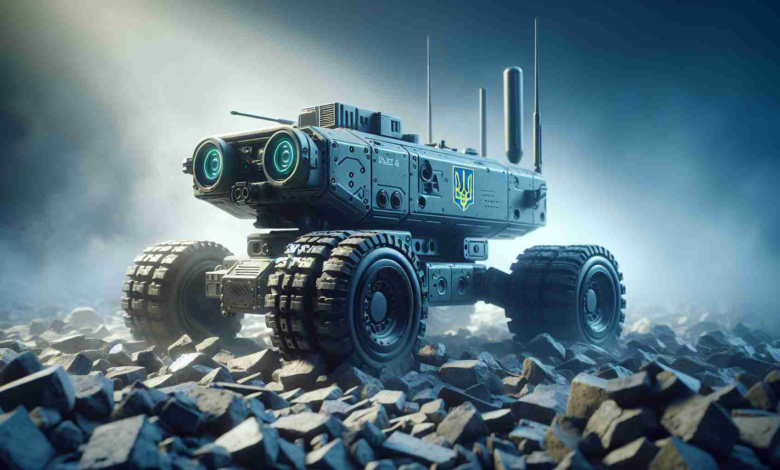
Summary: In Ukraine’s ever-evolving military tactics, the use of cutting-edge robotic technology has marked a significant stride. The Ukrainian army has augmented its warfare arsenal with the induction of unmanned ground vehicles (UGVs), such as the Ratel S, that are armed with anti-tank mines. Ingenuity in warfare has been pushed to new heights as these UGVs demonstrate tactical innovation and effectiveness on the battlefield.
The battlefield has transformed into a tableau of innovation and strategy where the Ukrainian army’s recent employment of the Ratel S UGV has been a game changer. This ground-breaking robotic system carries the capacity to deploy anti-tank mines and has proven to be decisive in operations that seek to derail adversary advancements. The utility of the Ratel S was distinctly displayed in a mission aimed to bring down a bridge in the Donetsk region, thwarting the maneuvers of Russian troops.
Developed in collaboration with Brave 1, a Ukrainian defense association, the Ratel S signifies a leap in affordable military solutions through advanced robotics. The creator of the Ratel S, Taras Ostapchuk, has highlighted the grassroots initiative underpinning its development; with the community lending financial support through crowdfunding.
Unseen and silent until its deadly mission is executed, the Ratel S advances at 24 km/h and can operate up to 2 hours with a 6 km range. It can be equipped with varied explosive devices, showcasing its adaptability for numerous combat scenarios.
In a demonstration, the Ratel S was featured carrying TM-62 anti-tank mines, emphasizing its prowess in integrating such formidable weaponry. The deployment of these versatile UGVs follows the increased usage of FPV drones, marking a shift towards greater autonomy and remote operation in Ukraine’s military strategy.
The innovation encapsulated by UGVs like the Ratel S not only underlines the resourcefulness of Ukrainian forces but also highlights how technology is progressively redefining modern combat dynamics.
Utilization of Robotic Technology in Combat
The integration of unmanned ground vehicles (UGVs) into modern warfare represents a revolutionary step in military tactics and strategy. The Ratel S, utilized by the Ukrainian army, is a prime example of how robotics can enhance the efficiency and safety of military operations. This particular UGV’s aptitude for deploying anti-tank mines allows forces to engage in combat scenarios with reduced human risk, while maintaining a strategic advantage.
The impact of such innovations is not limited to immediate tactical gains on the battlefield but also influences the overall defense industry. The development of affordable and effective military robotics opens up new market segments, providing opportunities for defense contractors and startups alike. The global defense robotics market is projected to grow significantly, driven by increasing demand for unmanned solutions that offer strategic and operational flexibility.
Market Forecasts and Industry Growth
Market analysts predict a sustained increase in investment in military robotics. This includes autonomous systems for reconnaissance, logistics, and combat support. The UGV market itself is part of a larger trend towards automation and unmanned systems in military applications, which is expected to continue expanding in response to an ever-evolving threat landscape.
With this projected growth come several industry challenges, such as the need for continual innovation, the integration of artificial intelligence, and securing communication systems against cyber threats. Additionally, as military robots become more commonplace, ethical and legal concerns about their use in combat situations will likely become more pronounced.
Issues in the Military Robotics Industry
Ethical concerns are central among the issues related to the deployment of military robots like the Ratel S. The prospect of autonomous weapons systems capable of making life-and-death decisions raises significant ethical questions that have yet to be fully addressed by international law.
Furthermore, the technological sophistication of devices such as the Ratel S necessitates robust defenses against cyber threats, as the consequences of hacking or jamming could be severe. Protecting these systems from such risks is a critical component of their deployment.
Efforts to standardize and regulate the use of military robotics across different countries also present a challenge, as there are varying perspectives on what constitutes acceptable use. This points to the necessity for international dialogue and potentially, new frameworks or treaties that address the deployment of autonomous weapons systems.
In conclusion, the technological advancements represented by the deployment of UGVs like the Ratel S are shaping the future of military engagements, influencing industry growth, market dynamics, and the policies surrounding the ethical use of these systems. As these technologies continue to evolve, they will undoubtedly redefine the theater of war, influencing strategic decisions and military capabilities for years to come.
For more information on advancements in military technology and the broader industry, you may find the following resources helpful:
– For robotics and automation: Robotic Industries Association
– For defense industry news and market analysis: Defense News
– For information on international security and defense policy: The International Institute for Strategic Studies
– For insights on technological innovation in warfare: Center for Strategic and International Studies
The future of combat operations will increasingly depend on the successful integration of technologies such as the Ratel S into military strategies, necessitating continued dialogue and innovation within the global defense community.

Marcin Frąckiewicz is a renowned author and blogger, specializing in satellite communication and artificial intelligence. His insightful articles delve into the intricacies of these fields, offering readers a deep understanding of complex technological concepts. His work is known for its clarity and thoroughness.
